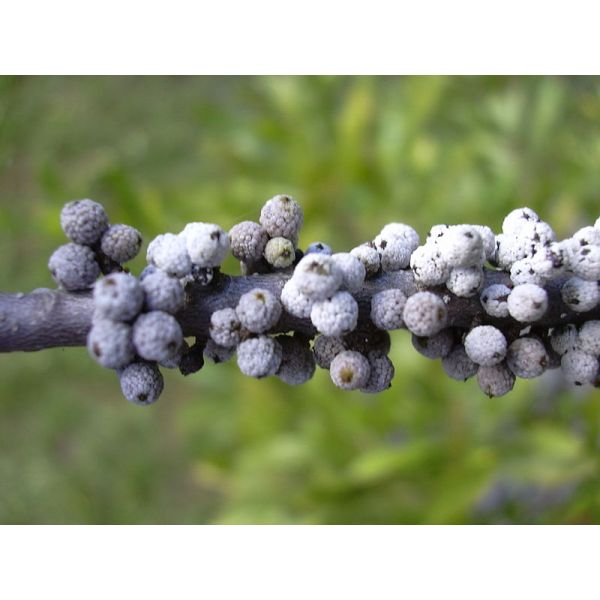Morella Cerifera Seeds (Wax Myrtle Seeds)
Morella Cerifera Seeds (Wax Myrtle Seeds)
A tea made from the leaves is used in the treatment of fevers and externally as a wash for itchy skin...

Delivery
All orders shipped with UPS Express.
Always free shipping for orders over US $250.
All orders are shipped with a UPS tracking number.
Returns
Items returned within 14 days of their original shipment date in same as new condition will be eligible for a full refund or store credit.
Refunds will be charged back to the original form of payment used for purchase.
Customer is responsible for shipping charges when making returns and shipping/handling fees of original purchase is non-refundable.
All sale items are final purchases.
Help
Give us a shout if you have any other questions and/or concerns.
Email: contact@domain.com
Phone: +1 (23) 456 789
Availability: Out of stock
SKU
Morella Cerifera
Morella cerifera also known as Wax myrtle, Southern Bayberry, Candleberry, Myrica Cerifera, is a popular evergreen ornamental shrub native to low-elevation tropical, subtropical, and warm-temperate regions of the Americas. Morella cerifera grows to a maximum height of 40 feet (12m)at a fast rate.The tree serves as an excellent screen plant.
Wax myrtle tree growns rapidly. It prefers growing in part sun. It grows naturally in wetlands and in both coniferous and mixed-broadleaf forests. The species is adaptable, it will tolerate many conditions, although it has a need for frequent pruning.
The light olive-green foliage has a spicy fragrance. Morella cerifera is in flower from Apr to June. Wax-myrtle fruits are small, light green with a waxy pale blue coating, which along with the plant's slightly myrtle-like leaves, gives it the common name Wax-Myrtle.
The fruit is a source of food for many bird species. The fruit can be eaten raw or cooked. Leaves and berries are used as a food flavouring.
Colonists separated the fruits waxy covering in boiling water to make fragrant-burning candles, a custom still followed for old-fashioned Christmas decorations called bayberry candles.
Hardiness zone: 7-11
| Label | Morella cerifera |
|---|---|
| Common name | Wax Myrtle, Southern Bayberry,Candleberry, Bayberry tree |
| Family | Myricaceae |
| Genus | Morella |
| Species | Morella cerifera syn. Myrica cerifera |
| Therapeutic uses | The plant is still used today in the treatment of fever, diarrhea, and a few other ailments. Wax myrtle is a popular herbal remedy in North America where it is employed to increase the circulation, stimulate perspiration and keep bacterial infections in check. The plant should not be used during pregnancy. The root bark is antibacterial, astringent, emetic (in large doses), sternutatory, stimulant and tonic. It is harvested in the autumn, thoroughly dried then powdered and kept in a dark place in an airtight container It is used internally in the treatment of diarrhoea, irritable bowel syndrome, jaundice, fevers, colds, influenza, catarrh, excessive menstruation, vaginal discharge etc. Externally, it is applied to indolent ulcers, sore throats, spongy gums, sores, itching skin conditions, dandruff etc. The wax is astringent and slightly narcotic. It is regarded as a sure cure for dysentery and is also used to treat internal ulcers. A tea made from the leaves is used in the treatment of fevers and externally as a wash for itchy skin. |
| Germination | Sow seed outdoors in the fall or stratify. Wax myrtle will root from softwood or semi-hardwood cuttings taken in summer. Root cuttings, 2-3 in. long., can be make in early winter. |
| Scarification / Stratification | Cold stratify in moist peat 60-90 days at 34-41 degrees F (1-5 degrees C). Many seeds have a waxy coat that prevents water uptake and stratification. Soaking seeds in hot water or rubbing them vigorously against a rough surface will help remove the wax. Sow in a cold frame. |
| Price View | Price Range |

